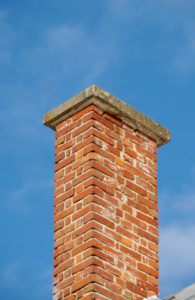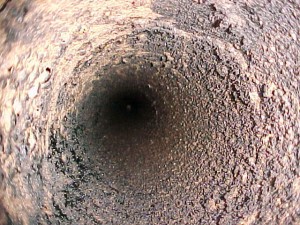What is Glazed Creosote?
Your chimney system works all season long to vent the fires that heat your home. The chimney system endures high temperatures and corrosive materials that coat the inside. If you burn wood in your fireplace, your fire produces more than just smoke and soot, but also creosote. This material is made of mostly tar that can become quite the problem if not routinely removed from the chimney.
What is Creosote
 Creosote is produced when organic materials such as wood are burned inside the fireplace. Burning unseasoned wood that often burns incompletely will contribute to even more creosote buildup. Creosote itself is as harmless as soot when removed from the chimney on a regular basis. However, when the fire is smoldered and improper wood is burned continuously, or the chimney system isn’t cleaned regularly, the creosote can become a problem.
Creosote is produced when organic materials such as wood are burned inside the fireplace. Burning unseasoned wood that often burns incompletely will contribute to even more creosote buildup. Creosote itself is as harmless as soot when removed from the chimney on a regular basis. However, when the fire is smoldered and improper wood is burned continuously, or the chimney system isn’t cleaned regularly, the creosote can become a problem.
The Problem with Creosote
Because creosote is sticky in nature, it builds up easily inside the chimney system. During the offseason, it may not do anything but cause nasty odors in the fireplace opening. During burn season, creosote can become quite dangerous. As the material builds on itself, it can obstruct the chimney flue, slowing the airflow and cause even more creosote to deposit.
As the air slows, the heated air in the chimney heats up the creosote, causing the water inside to vaporize and the material to transform. What’s left when the creosote cools is a hardened glazed mass that is made up mostly of condensed fuel (tar). This brittle material is highly flammable and very difficult to remove.
Removing Glazed Creosote
Regular creosote can be removed from the chimney system in the same way as soot and ash, with brushes and a vacuuming system. Glazed creosote is more difficult to remove. Many amateurs attempt to remove glazed creosote with chisels, chains, and heavy-duty tools—all of these things can damage the lining of the chimney. At Chief Chimney Services, we remove glazed creosote by using an industrial creosote remover that is sprayed or brushed onto the material. As it absorbs the remover, the creosote flakes away and can be brushed off and vacuumed out of the system.
You Can Prevent Glazed Creosote
- Schedule routine services such as sweeps and inspections. You may not notice a creosote buildup, but your chimney professional will. We will clean it out of the system, and troubleshoot with you to determine the cause.
- Burn only properly seasoned wood in your fireplace. Avoid burning paper, trash, clothing, or any other material that is NOT wood. The wood-burning fireplace is designed to only burn wood and vent smoke produced by wood fires.
- Let your fire burn and avoid smoldering hot coals. Smoldering causes wood to burn incompletely, contributing to more creosote buildup.
In order to use your fireplace more efficiently, ask the professionals for recommendations to avoid creosote buildup. When you schedule your service with Chief Chimney Services, you will have the benefit of an expert in the home. Call Chief Chimney Services today at 631-863-2460.

